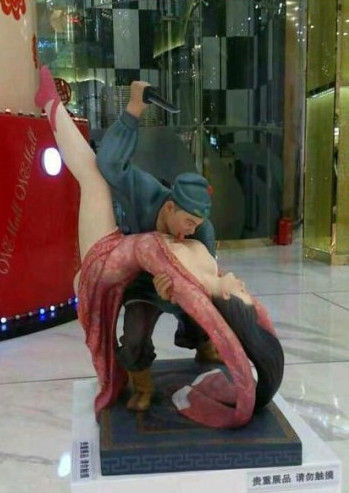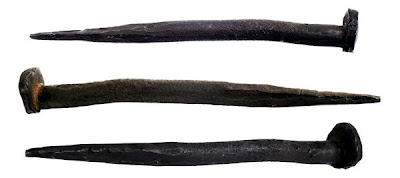I would like to draw all of my readers’ attention to Ben Judkins’ blog Kung Fu Tea. He began posting in August of 2012 and now has a large number of posts on what he calls martial studies. When I started reading his posts I immediately knew I had found a kindred spirit; a seriously trained martial artist (Wing Chun) who was open to viewing contemporary Chinese martial arts as having emerged from a milieu which embedded them in ritual, theater, music, and other complex social and religious phenomena. (We need a name for this type of view/study/project.)
I quickly sent Ben an email introducing myself and then I called Daniel Mroz at the University of Ottawa. Daniel teaches Theater using Choi Lifut and Chen style Taijiquan as the basic training. Or perhaps, if one accepts the premise of this blog, he teaches Chinese Martial Arts from its theatrical base. Anyway, I excitedly asked Daniel if he wanted to help me organize an academic conference, and with his help we quickly made out a list of scholars and experts we hoped to invite. (We need a name for this conference)
That week I had a wonderful talk with Ben on the phone. His focus is the Southern area around Hong Kong and mine has tended to be the North of China, so he had a number of interesting reading suggestions that I have been plowing my way through. The conversation also opened me up to thinking more broadly about the spread of martial arts theater (so called opera) outside of China. Look at this Wiki page on Bruce Lee’s father-- he was in 86 films!
__________________
Ben Judkins’ current post is about Bandits, Eunuchs, and the Son of Heaven, Rebellion and the Economy of Violence in Mid-Ming China by David M. Robinson, (which I reviewed here). My paper, Theater, Ritual and Exorcism in Chinese Martial Arts (download the pdf), relies heavily on Robinson’s book in places and so I read Judkins’ current post as thoughtful feedback of my own work. I just want to respond to it here briefly.
by David M. Robinson, (which I reviewed here). My paper, Theater, Ritual and Exorcism in Chinese Martial Arts (download the pdf), relies heavily on Robinson’s book in places and so I read Judkins’ current post as thoughtful feedback of my own work. I just want to respond to it here briefly.
Judkins’ draws a distinction between two ways of looking at history, “rational choice” and “thick description.” It is a wonderful discussion. He makes a very good case that there is an event (the Opera Rebellion) which was foundational in the creation of the modern martial arts of Wing Chun, Choi Lifut, and possibly a few others. He posits that people made rational choices which drove that event. I think he would agree that we still can’t know very much about why the martial arts turned out the way they did without a "thicker" description, perhaps including a discussion of the way rituals are used and physically embodied to remember events inside or outside of normal histories.
I would invoke Mary Douglas’ How Institutions Think  , and say that there is deep continuity within the ritual and theatrical aspects of martial arts training which effect memory, values, and ways of knowing, even across cultures and stretches of time. So here I suppose I am going further a field then Geertz’s “thick description.” I am studying me, and people like me, who have discovered themselves inside a cultural milieu, not just agents of a “thick” description but something with more space, more volume. (We need a name for this)
, and say that there is deep continuity within the ritual and theatrical aspects of martial arts training which effect memory, values, and ways of knowing, even across cultures and stretches of time. So here I suppose I am going further a field then Geertz’s “thick description.” I am studying me, and people like me, who have discovered themselves inside a cultural milieu, not just agents of a “thick” description but something with more space, more volume. (We need a name for this)
For instance in teaching Baguazhang’s single palm change I use many different metaphors to embed the movement with meaning. I can spontaneously come up with a hundred utilitarian technical “applications” of single palm change, but I know that students don’t learn the “real” single palm change that way. Metaphors transmit complex kinesthetic ideas like being asocial without an agenda. Yesterday I attempted to communicate this to a student by telling her the story of Musashi and Benkei, in which Benkei in his last breath says, “Thank you” to Musashi for having just broken the rules of the duel and killing him with his short sword. Then I said, “Offer your arms as if you are the old warrior Benkei thanking Musashi for killing you.” Sometimes I use material from Daoist Ritual, it depends on the student and the situation. Another student, who is a doctor, came to me one day and said, “I figured out how to practice single palm change. I imagine I am delivering a premature baby from the mother to the intubation table. These babies are extremely slippery and small and they haven’t breathed yet so they have to be moved and placed quickly, but with perfect balance and softness.”
That student’s description of delivering a baby (actually more than a hundred babies) is emotionally intense, physically refined, spatially alive, and socially meaningful. If bagua is done as ritual emptiness, it both accumulates and resolves kinesthetic memories like this one. In fact, that is actually what you do when you fight with it.
Perhaps this is a longer discussion than I set out to have but I wanted to say this: Rather than framing “the project” as thinking about causes and events in history, or specific milieus which nurtured or influenced the martial arts, I would like to think about the martial arts we know and follow strands of thought and movement and experience and knowledge back through time and space. I suppose in a way I want to reverse engineer history, ethnology, and religion. (We need a name for this)
___________________
Judkins’ previous three posts are about Peter A. Lorge’s book Chinese Marital Arts From Antiquity to the Twenty-First Century, published by Cambridge University Press. I picked this book up about a year ago while on the UC Berkeley campus. When I got home I sat down with a big expectant grin (Cambridge Yea!) and read the Introduction. Then I stood up, threw the book in the air and did a spinning double back kick, knocking it across the room where it smashed into the wall. I then ran to my bed and screamed into my pillow for three hours, at which point I sat up quickly read the rest of the book and then called Daniel Mroz (this is his blog--and this is his book! ) and begged him to convince me to not write a review of it. Which he did.
) and begged him to convince me to not write a review of it. Which he did.
To my delight Judkins has reviewed the book and found kind and scholarly ways to say most of the things I was going to say through my teeth. What a great ally!
I realized after thinking about it for a few months that if there had been no Introduction and the book had been titled Key Innovations in the Development of Warfare in North Asia, and he had used the words warfare or combat all the way through the text I would have been delighted to find the handful of golden nuggets in there. But it is not a book about martial arts, the nuggets are there because the subjects have some small overlap.
I also realized, with time, that his introduction very clearly lays out the antithesis of what I think the subject is. Which is helpful! Lorge rejects the quest for authenticity in the martial arts and the importance of naming-- two things I believe are indispensable.
I used to teach high school students and I’ve had quite a lot of students who were in street gangs. These kids had been taught how to fight. They had done a lot of what I would call adrenalized scenario training. Most of it on each other, but some of it on people they targeted as victims or rival gangs. They knew how to spar, some dirty wrestling, how to use elements from the environment to advantage (including weapons) and how to fight effectively as a group. But they had no martial arts skill. Period.
In that same vein Lorge attempts to make a distinction between the aesthetics of violence and all other aesthetic considerations. While it is true that people will search Youtube to watch gang fights or violent crimes being committed as entertainment, I don’t see how a practitioner of martial arts can confuse that with the performance of martial arts.
Aesthetics, authenticity and naming can be challenging issues to discuss, but they are also essential issues.
___________________________
So, in keeping with the title of this post, we need a name for this project. I don't have it yet, so I'm looking for feedback. Here are some rough stabs at it:
Milieu Martial Arts (MMA) ha ha...
Situational Loci of Aesthetical Fighting and Performance Studies
Apophatic Kinesiological Ethnographical Martial Investigations through Time
Ritual Martial Theater Confluence Studies of History and Ethnology
Reverse Engineering Martial Arts and Performance
Normalizing Martial Arts Expertise through the study of Violence, Markets and Theatricality
Martial Arts Ritual Studies
Very Thick Ritual Martial Arts Performance and Historical Re-visioning.
Embodied Martial Artists Reclaiming Ritual Theater as Historic Memory (EMARRTAHM)






